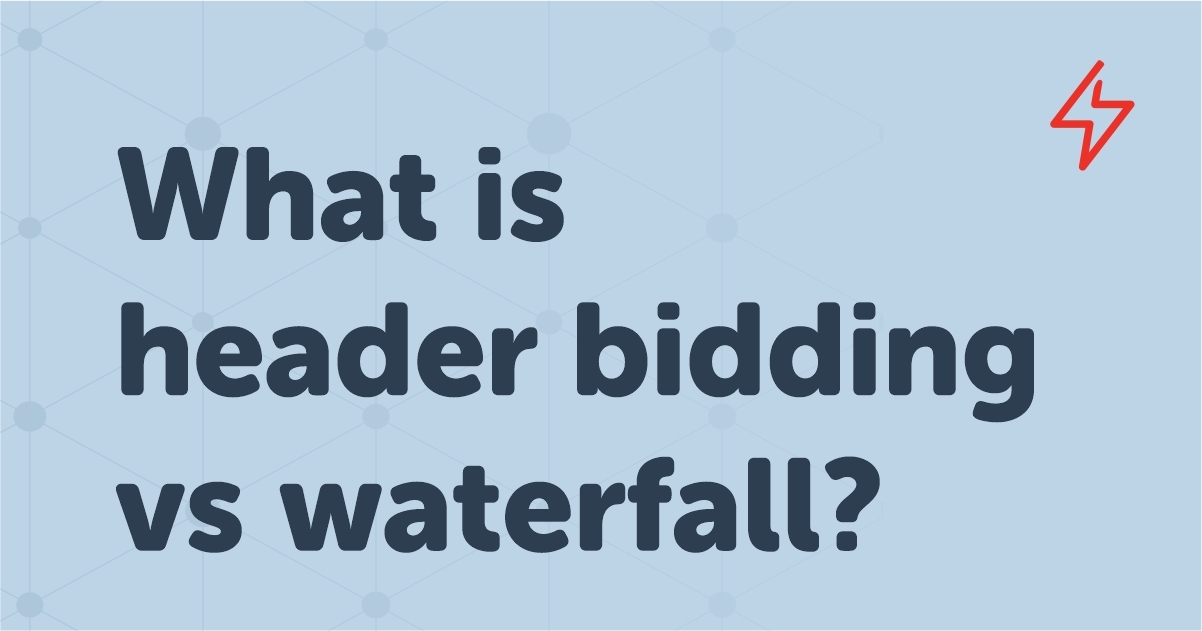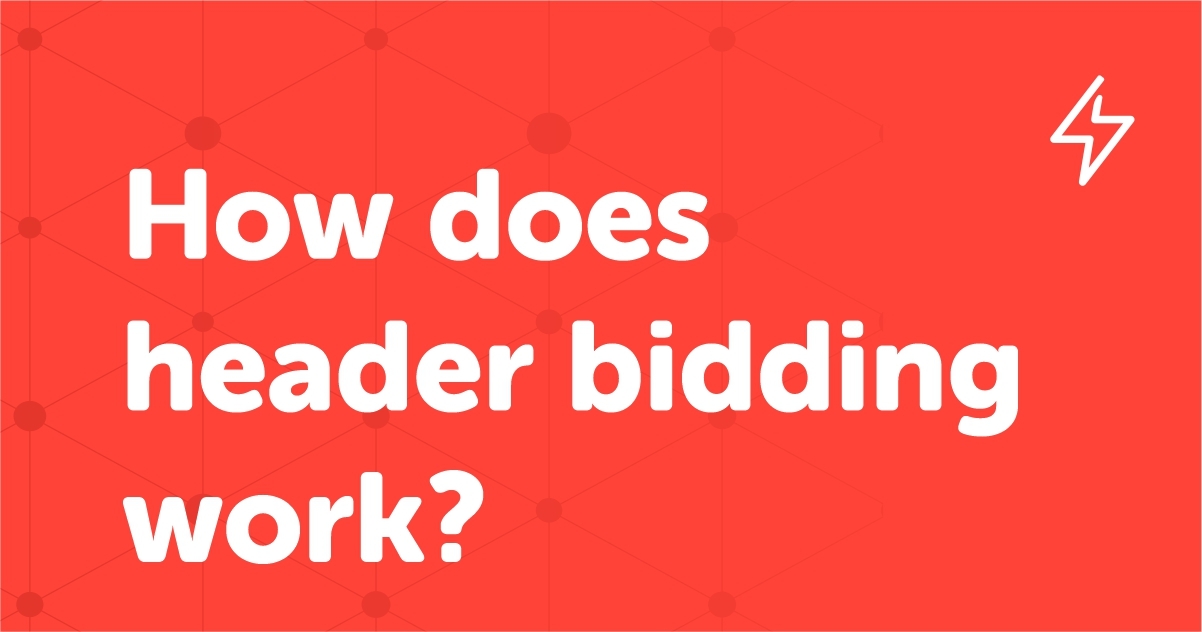Table of Contents
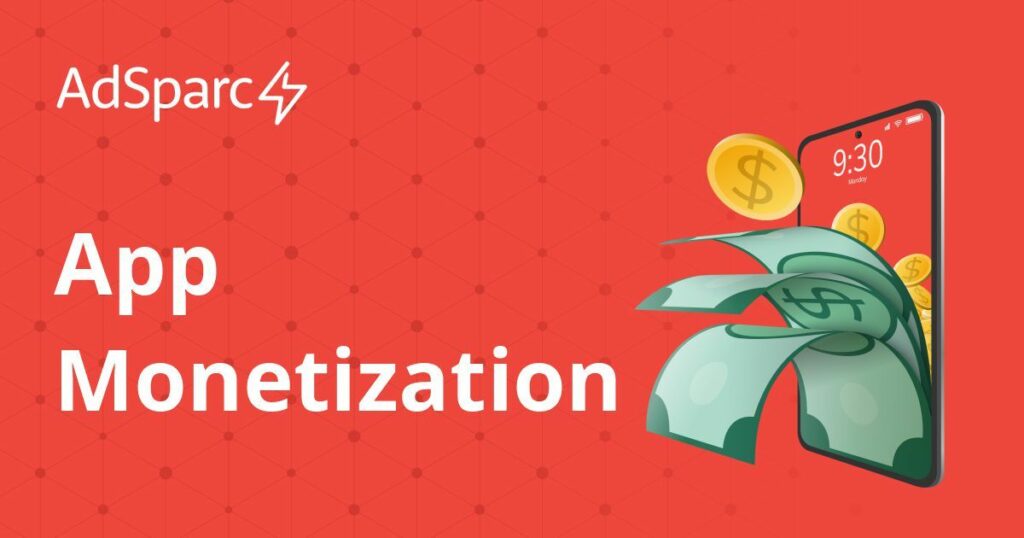
Launching a fantastic app that instantly creates an impression and where users fall in love is merely one part of creating a rewarding and successful app. The next logical and vital step is making money with the correct app monetization strategy. The goal of app monetization or mobile app monetization is to allow publishers and developers to leverage a consumer base to earn more money from the app. The tactics and strategies for achieving this goal vary, and it comprises paid apps, in-app purchases, advertising, and multiple other options.
Whether you are wanting to monetize your app for the first time or considering optimizing the revenues of an existing successful app, this guide is relevant to all app owners and developers. If you are in the early stage of the mobile app monetization journey, an experienced hybrid app monetization expert, a free app, or a paid app expert, this guide is for you. It’s for anyone who wants to generate revenue from their mobile app. After reading, you’ll have a comprehensive idea of which monetization strategy, or a combination of strategies, is best for your app.
So, let’s dive in and get ready to explore the ultimate guide to app monetization:
- What is app monetization?
- Why is app monetization crucial?
- Why is the user experience vital?
- Stats and figures around app monetization
- A complete overview of the app monetization strategies, In-app advertising, and Ad Formats:
- Banner Ads
- Interstitial Ads
- Interstitial Video Ads
- Native Ads
- Reward Ads
- Reward Video Ads
- Outstream Video Ads
- Instream Video Ads (Pre-Roll Video)
- List of best practices for app monetization – how to improve your in-app revenue
- What’s new?
What is app monetization?
First, let’s start with the definition – what is app monetization or mobile app monetization? Well, in one sentence – app monetization or mobile app monetization is the method or procedure of transforming your app users into revenue. This method or process encompasses multiple strategies. Certain categories of apps are more suited to specific app monetization models than others. Some apps focus on a particular area of monetization, and others integrate multiple aspects. As a developer, one of the priorities is to generate revenue from your app. Unless you have secured a significant amount of funding, it’s vital to read the recommendations in this blog.
Why is app monetization crucial?
App monetization or mobile app monetization is vital because it is more common to find that apps are free of cost at the point of installation. So, your app business model needs to take this into account. Developers should modify their revenue model to generate cash after download. This is where your app monetization or mobile app monetization strategy comes in. You need to take time and strategize to ensures these two things happen:
- The app generates promising revenue
- Keep users and the user experience comparatively intact
Many overlook the second point. It’s just as vital to look at how mobile app monetization affects the app experience in order to maximize revenue.
Why is the user experience vital?
User experience is vital to a productive and successful monetization strategy because revenue necessitates happy users. Blunt monetization typically damages the app user experience. It can be moderated and abridged; however, it is still there. Dropping the user experience instigates a turned-off situation for some users. App monetization or mobile app monetization revenue is usually calculated by the number of active users. As this figure is directly proportional to user experience, developers must consider this while determining a monetization strategy.
Statistics and figures around app monetization
Before jumping deep into the statistics, let’s take a closer look at the most thrilling app revenue trends currently at play:
- Users are spending $380 billion globally on in-app purchases
- More than 5 million apps are actively functioning
- App revenue statistics show that in 2020, the total ad revenue was $581.9 billion
- Google Play generated $36.7 billion, and the Apple App Store generated $31.8 billion in sales in Q1 2021
- Customer spending on the App Store will reach nearly $200 billion by 2025
- One of the most common monetization models is through in-app purchases. An estimated 50% of non-game and 79% of game apps use it
- 98% of Google Play revenue comes from free apps
App revenue stats tell us more than five million apps are currently functioning, 96.4% of which are free on the Google Play store. As we can see, most of the apps are free; how do they make money? Advertising plays a huge role, as well as in-app purchases. Gradually subscription models are also gaining popularity. Pay monthly models are working well in numerous industries like Netflix, Spotify, and more. App developers are realizing and appreciating that a subscribing, engaged user is worth more than a single paid user.
A complete overview of the app monetization strategies, In-app advertising, and Ad Formats
Now let’s start with what kind of monetization strategies are available. Which ones are most effective and achievable? Which generates the most revenue for your app? App monetization strategies can be complex, and they can be utterly different from monetizing templates or courses. There are many ways to generate revenue from your app. Some developers focus on one particular strategy, while others take a hybrid approach.
In-app advertising:
This is still the utmost popular method amongst app owners. And, it typically generates a lot of discussions. There is no simple one-size-fits-all approach to in-app adverts. Each app implements advertising differently. However, there are general tips for advertising in apps:
- Aids – quick to implement, simple mobile app monetization process
- Alarms – can affect the app experience, only generates noteworthy figures if you have a broad app audience
But the ugly truth is that many apps wouldn’t exist without in-app advertising and mobile ad networks. Let’s look at the various types of in-app adverts now:
Banner Ads:
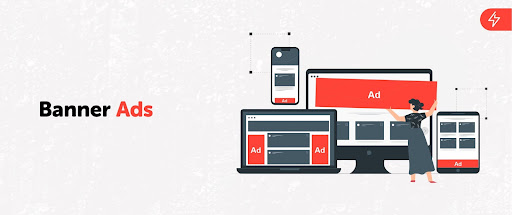
Banner ads are the original app advert. Banner ads were more common when apps had a free and paid version. A banner ad was a quick way to generate revenue and used to have an ad-free version. However, people were happy to not see any banner ads and that illustrates the problem.
Why aren’t banner ads as effective anymore?
Honestly, try to focus on the UX. Banner ads are intrusive. It diverts the user’s attention from the app experience. They are usually so small on a mobile screen that the advertiser doesn’t get much value from using the space. That means advertisers are generally not willing to pay much for the privilege. Banner ads have low engagement rates. For these reasons, the CPM is pretty low compared to other ad formats. People don’t tend to interact with the short of in-app banner ads, rigid standard banner ads sizes. Banner ads annoy the consumer or user, and you won’t even get paid much for using them.
Another reason banner ads are struggling is marketers’ lack of competent tabs, leading to doomed banner ad placements. For example, a banner advertising a new rock group would have trouble at the top of an article about country music. Poor design is another bad banner ads example that leads to an overall ineffectiveness of the practice. Additionally, poor banner ads for an advertising brand or the site on which the advert appears; the advert might even contradict or offend when viewed alongside the core page content.
Interstitial Ads:
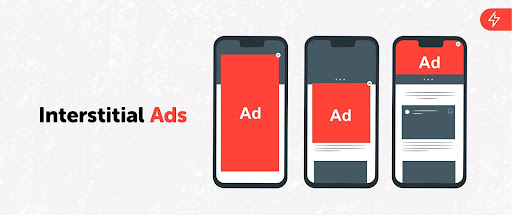
Developers across the market are looking at substitutes for bad in-app advertising formats, such as banner ads. The key snags with banner ads are the standard banner ads size and the fact that they are intrusive. One possible solution to this setback is to take the same advertisements and display them as a full-screen ad to the consumer. This occurs between separate user flows. Hence the name interstitial ads.
To get the most out of the interstitial ads’ strategy you need to completely understand your users and how your user uses the app. Make sure that you don’t unintentionally ruin the user experience. Mobile interstitial ads are usually full-screen ads covering most of the active screen and can float over a web page in view or fill the screen on a mobile device.
Interstitial Ads appear in between the content a user is engaging with. Interstitial ads are triggered by clicking a link within the article, served with a clear exit option, and direct to the following page. The correct time to deliver an interstitial ad is at the end of a flow. Interstitial ads examples could be when a level is complete in a game app. Another interstitial ads example could be to utilize mobile interstitial ads when the app is loading. It gives the user time to understand the ad and think about its content.
Interstitial ads can deliver higher click-through rates, more ad impressions, higher conversion rates, and amplified revenue. Interstitial ads deal with a larger format size that encourages greater creativity and improved user engagement. The revenue opportunity is the main reason sites may use, or at least test, mobile interstitial ads. Interstitial ads were designed with the user in mind. Mobile interstitials ads provide a clear option for the user to navigate away from the ad, continuing with the content.
Interstitial Video Ads:
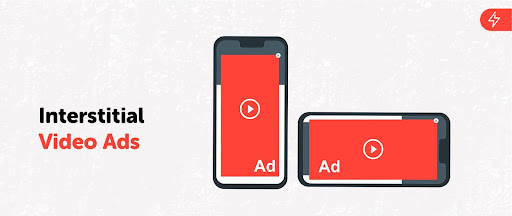
If you want a full-screen ad experience, go for interstitial video ads. Interstitial video ads are usually served during natural breaks and transitions within the content like on mobile games. Interstitial video ads utilize the power of full-screen impressions without interrupting the user experience and gameplay. Interstitial video ads show effective video ad content that is usually skippable after five, fifteen, or twenty seconds.
Native Ads:
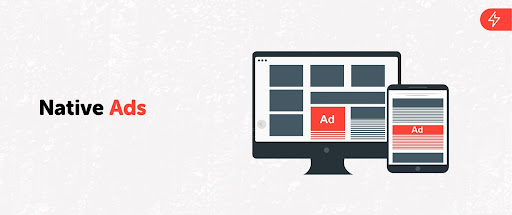
Native ads are typical ads that have been modified or adapted to the feel of an app. Native ads integrate effortlessly into the app. This usually includes a feed, where the ad looks like an alternative post in the timeline. Usage of native ads is prevailing amongst publishers. Native ads are moving in the right direction as they don’t affect the user experience when applied correctly. They have a higher engagement rate because of the ‘blend in’ nature with the app features. If you want to increase the effectiveness of the native ads, then make the native ad look and feel ‘native’ while indicating that the content they will land on is an advert.
Reward Ads:
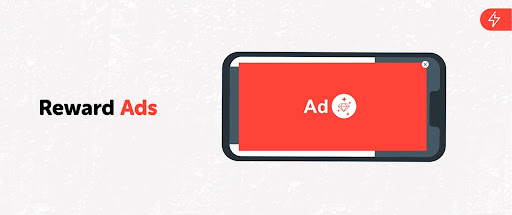
App reward ads are renowned and famous, where users spend a lot of time on the app, such as games. In this setup, users are often offered a reward to engage with content. For example, you may be provided with an extra life or coins in a game if you watch a 30-second advert.
However, you must get the reward ad and the reward right for reward ads to work exceptionally well. Always try to keep the content as relevant as possible to your consumer or user base. Ensure that the reward is delivered at the right moment and is immensely valuable for the user.
Reward Video Ads:
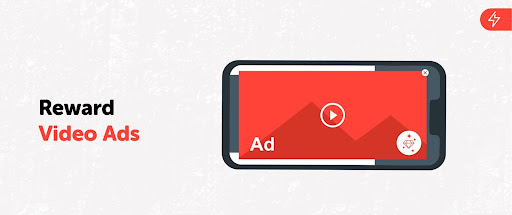
Reward video ads are a trendy ad format, especially for in-app content, where users are incentivized to watch a video ad. Rewards can be of various types like prizes, virtual currency, or extra life. Whereas for mobile web or desktop, rewarded video ads can offer users a stretch of ad-free content. Rewarded video ads are non-skippable videos typically in short form and are supported by user rewards. Users opt-in to watch a video ad in exchange for a prize or reward. However, if the user or the individual viewing the ad decides not to view it or clicks to close the ad beforehand, the reward video ad instantly prompts that it will forfeit the reward. Reward video ads uplift video completion rates and encourage better brand understanding. Plus, rewarded video ads help to drive app-install campaigns. Reward ads have a higher completion rate and optimal engagement benefit. Reward video ads are ideal for effective brand awareness.
Outstream Video Ads:
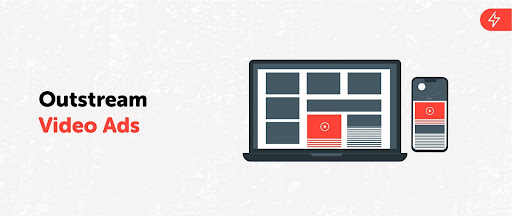
Outstream video ads, aka. native videos are called outstream because they exist outside the online video content. Publishers and marketers can guarantee viewability and heighten content engagement by leveraging outstream video content in premium placements. An outstream video ad unit integrates seamlessly with a publisher’s in-app, mobile web, or desktop content, instantly transforming it into a premium video inventory. An outstream video ad allows brands to worry less about ad fraud, and it has more views than other video ads.
Instream Video Ads:
Perhaps the most apparent benefit of in-stream ads is that you can link the success of another video to generate brand awareness in front of your target audience. Instream video advertising delivers all the functionality needed to drive more revenue with higher CPMs and enhanced CTR.
Three types of instream video ads are available:
- Pre-roll Video Ads – Ads that you see before the requested video begins
- Mid-roll Video Ads – More like commercial breaks, these ads play during the requested video content
- Post-roll Video Ads – These ads play at the end of the requested video, making them the least intrusive for users
Pre-roll video ads are displayed in a video player before the video content is played. Pre-roll video is part of in-stream, and linear video ads are in that subcategory. The pre-roll video ads are very popular on YouTube, Facebook, Twitter, Vimeo, and multiple platforms. Pre-roll video ads are highly preferable and the most used video ad types. Pre-roll video ads serve as a creative and visual way to promote a product and create brand awareness.
Summary of ads
Nowadays, more developers are becoming concerned about how advertising affects the app user experience. A broader discussion or banter is emerging. All the developers are now asking only one question – which is the best ad format to safeguard the UX? Well, that really depends on your app and your goals. We have come a long way since the early days of typical mobile banner ads. Mobile app advertisers have realized that safeguarding the user experience is vital to ensuring the survival of apps.
List of best practices for app monetization – how to improve your in-app revenue
User experience is your priority: Protect the user experience at all costs. If you hamper the user experience, you will damage your app monetization or mobile app monetization. Remember, keep your experience clean and ensure that monetization doesn’t spoil your app experience. Cultivating app engagement ensures more time spent on your mobile app, leading to greater monetization.
Always welcome new users: To scale monetization, you will need to keep investing in user acquisition. Never deviate from the user acquisition approach and always have user churn for new active users.
Adopt hybrid app monetization: It is absolutely fine to adopt multiple monetization methods, in fact it is highly recommended. Mobile app monetization methods can be implemented alongside each other. Always be sure that doing too much won’t adversely affect the user experience.
Be mindful of measurement and analytics: Measuring your monetization, optimizing, and adapting is an imperative part of any app monetization strategy. Ensure that your monetization partner is offering in-depth insights on revenue, users, and geography.
Being up to date is necessary: Keep an eye on changes in policy from the major app platforms. This is essential since it could change your strategy overnight.
Your app is exclusive: Don’t take other developers’ use cases as proof and think it will work for your app. Every app is unique and has unique differences. Just because it worked for another app doesn’t necessarily mean it will work for you too. Test methods and procedures entirely before implementing them. Always focus on the differences between apps while looking at other use cases and statistics.
What’s next?
Selecting the right app monetization of mobile App monetization model! So, ultimately which monetization strategy is best for your app? It entirely depends on your preference and app. In most cases, an amalgamation of the above ad formats will yield the best results. A mix of in-app advertising and the proper ad formats might work very well for a game. For certain lifestyle apps, offering a premium subscription and a free ad-supported version might work better.
However, the common denominator in most successful monetization strategies lies with AdSparc. AdSparc’s in-app products mainly comprise a tag-based demand via the Google IMA SDK (Adx, Open bidding, and Direct demand), S2S Header Bidding (if you already have the AdSparc or Prebid SDK integrated), and OpenRTB Endpoints (if you have a 3rd party mediation platform capable of OpenRTB).
To learn more about how AdSparc can help you monetize your app, test out the full-service ad operations & programmatic yield offered by us. This holistic full-stack solution gives you all the tools to begin maximizing your app’s revenues. Follow our exclusive guide, and feel free to comment below.
Also Read: Ultimate Overview of Google Ad Manager 360 for Publishers
